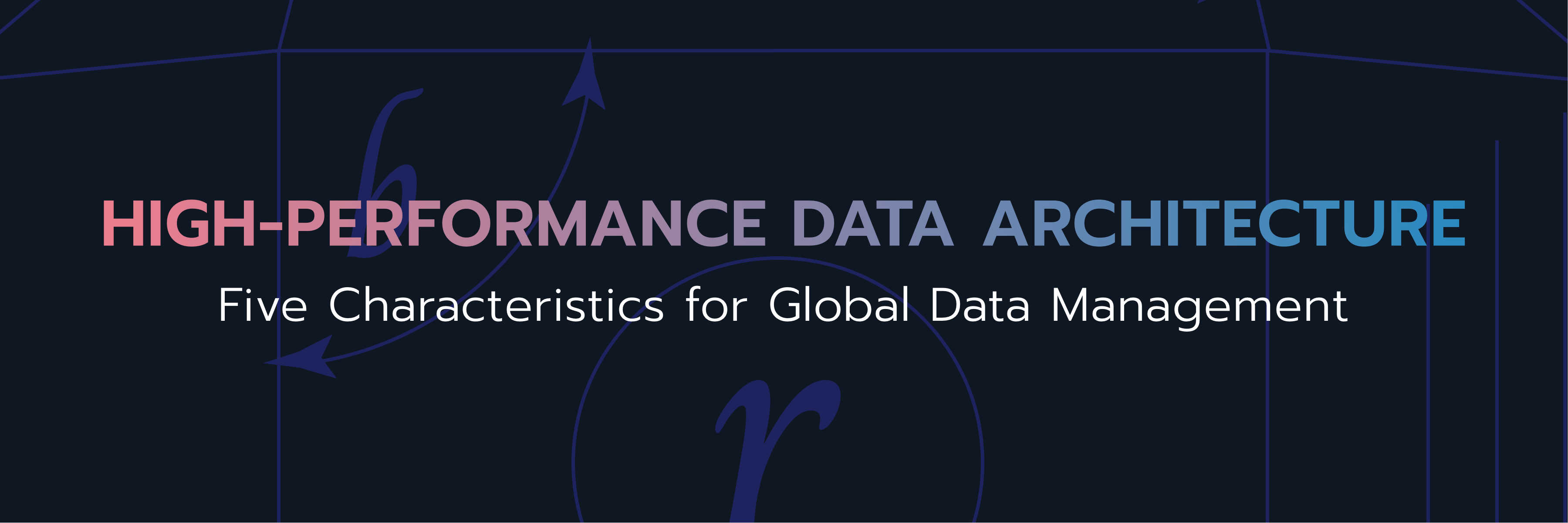
The objective of making a database choice that meets the requirements of today’s data-driven environments is to build high-performance data architectures. But what do these architectures look like? Existing databases address the business problems arising from a fast-paced digital economy.
However, the traditional approach of throwing databases at individual, siloed problems needs to be rethought. A more responsive data environment should ensure that enterprises can employ their data assets both tactically and strategically. Such a transformed environment has the following characteristics:
- Data is easily and readily available, on demand, to end users through self-service channels.
- Real-time and analytical data is supported with single, highly integrated environments.
- The data environment is highly automated, with tasks ranging from integration to security performed by the automated database.
- Data is responsive to the enterprise requirements at hand, be it customer experience management or compliance reporting.
- There is semantic interoperability, with data capable of moving between applications and systems on demand.
There’s no question that the amount of data now moving through, around, and between organizations can be overwhelming. In this blog post, we’ll explore the five characteristics that allow high-performance data architectures to provide environments that can form the basis of a well-functioning, data-driven enterprise.
Five Characteristics of High-Performance Data Architectures
A high-performance data architecture enables global, end-to-end data management through converged data platforms. Such an architecture supports the following qualities:
1. Simplicity
With distributed SQL databases containing hybrid transaction/analytical processing (HTAP) capabilities, data teams can reduce the number of vendors and database types with which they are working. There is less of a requirement for cobbling together and attempting to maintain complex, multidatabase environments. With this simplified architecture, a single database can handle multiple workloads, thereby reducing overall data management costs.
2. Greater scalability
A high-performance data architecture is capable of scaling on demand, an important advantage for fast-changing enterprise requirements. Rather than relying on separate OLAP and OLTP systems with varying scalability capabilities, distributed SQL databases containing HTAP capabilities enable scaling both types of workloads simultaneously.
3. Rapid data transfer to where it is needed, when it is needed
Distributed SQL databases containing HTAP capabilities eliminate the need for cumbersome ETL processes. They enable end users to run queries on incoming transactional data the moment it arrives, rather than moving into a data warehouse or other data management platform first. In addition, there needs to be a high degree of data mobility between private and public clouds.
4. Consolidated workloads—within a single environment
Typically, analytical and transactional processing workloads have been handled separately, within different database systems. Distributed SQL databases containing HTAP capabilities enable real-time analysis, and this real-time aspect is the key to the advantages these databases provide. They integrate transactional and analytical data, enabling analysis of transactional data as it enters the organization. This provides decision makers with a real-time picture of developments and events within their customer bases, markets, or even internal operations. Typically, users relied on analytical insights delivered from a separate system such as a data warehouse, which typically employed more historical and stale data as it moved from an OLAP to OLTP environment. Distributed SQL databases containing HTAP databases can consolidate these workloads within a single, more manageable environment.
5. Distributed SQL databases containing HTAP capabilities enable consistency
One of the most vexing challenges long faced by data managers and professionals is the many formats and silos occurring across their enterprises. Data managed with distributed SQL databases with HTAP capabilities assures data is consistent as it moves across functions.
Getting Started with High-Performance Data Architectures
There are many choices available to organizations seeking greater simplicity and scalability. Previous and current generations of databases can easily handle online transaction processing (OLTP) workloads, while others can handle online analytical processing (OLAP) queries. For those organizations seeking a more integrated approach to both OLTP and OLAP requirements, a solution such as distributed SQL databases containing HTAP capabilities offers a simplified and consolidated approach for building a real-time, data-driven enterprise.
Check out our latest O’Reilly report to find out what a high-performance data architecture is, unpack its various design components, and uncover how these architectures improve data management in the cloud. You’ll also discover:
- Why databases keep evolving
- How to choose the right database for your company
- Design patterns for building a high-performance data architecture
- The impact of artificial intelligence (AI) on database architecture
Experience modern data infrastructure firsthand.
TiDB Dedicated
A fully-managed cloud DBaaS for predictable workloads
TiDB Serverless
A fully-managed cloud DBaaS for auto-scaling workloads



